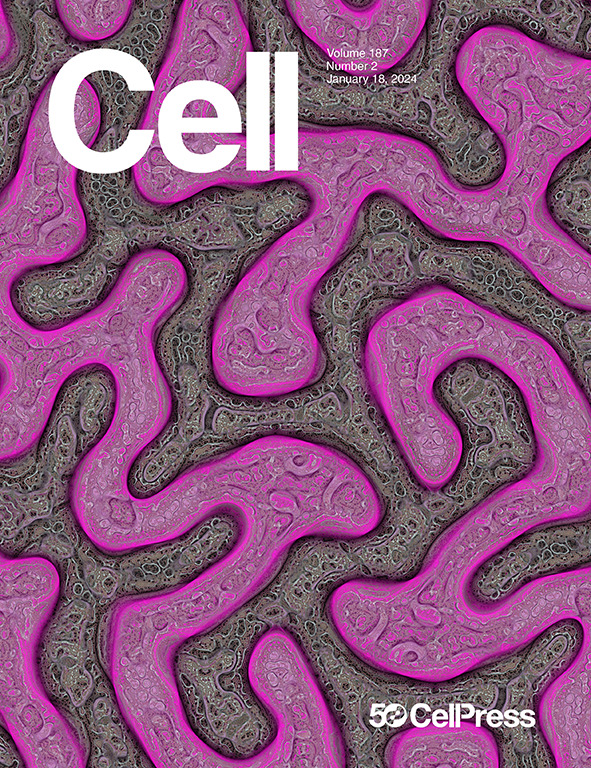人类肠道微生物群物种的整体遗传结构与地理位置和宿主健康有关
IF 45.5
1区 生物学
Q1 BIOCHEMISTRY & MOLECULAR BIOLOGY
引用次数: 0
摘要
人类肠道中有数千种微生物,每一种都表现出显著的个体间遗传变异。尽管许多研究已经将微生物相对丰度与人类健康相关表型联系起来,但肠道微生物的实质性种内遗传变异性尚未得到全面考虑,限制了将此类遗传性状与宿主条件联系起来的潜力。在这里,我们分析了来自全球94个微生物组研究的32152个宏基因组,以调查人类微生物组的种内遗传多样性。我们重建了583个物种特有的系统发育,并将它们与地理信息和物种的水平传播性联系起来。我们确定了484种微生物菌株水平与241种宿主表型的关联,包括人体测量因素、生化测量、疾病和生活方式。我们观察到,与不同的血浆胆汁酸谱相关的瘤胃球菌进化支和黑色素瘤和前列腺癌相关的Collinsella进化支在九十岁老人中较高的患病率。我们的大规模种内遗传分析强调了菌株多样性的相关性,因为它与人类健康有关。本文章由计算机程序翻译,如有差异,请以英文原文为准。

Global genetic structure of human gut microbiome species is related to geographic location and host health
The human gut harbors thousands of microbial species, each exhibiting significant inter-individual genetic variability. Although many studies have associated microbial relative abundances with human-health-related phenotypes, the substantial intraspecies genetic variability of gut microbes has not yet been comprehensively considered, limiting the potential of linking such genetic traits with host conditions. Here, we analyzed 32,152 metagenomes from 94 microbiome studies across the globe to investigate the human microbiome intraspecies genetic diversity. We reconstructed 583 species-specific phylogenies and linked them to geographic information and species’ horizontal transmissibility. We identified 484 microbial-strain-level associations with 241 host phenotypes, encompassing human anthropometric factors, biochemical measurements, diseases, and lifestyle. We observed a higher prevalence of a Ruminococcus gnavus clade in nonagenarians correlated with distinct plasma bile acid profiles and a melanoma and prostate-cancer-associated Collinsella clade. Our large-scale intraspecies genetic analysis highlights the relevance of strain diversity as it relates to human health.
求助全文
通过发布文献求助,成功后即可免费获取论文全文。
去求助
来源期刊

Cell
生物-生化与分子生物学
CiteScore
110.00
自引率
0.80%
发文量
396
审稿时长
2 months
期刊介绍:
Cells is an international, peer-reviewed, open access journal that focuses on cell biology, molecular biology, and biophysics. It is affiliated with several societies, including the Spanish Society for Biochemistry and Molecular Biology (SEBBM), Nordic Autophagy Society (NAS), Spanish Society of Hematology and Hemotherapy (SEHH), and Society for Regenerative Medicine (Russian Federation) (RPO).
The journal publishes research findings of significant importance in various areas of experimental biology, such as cell biology, molecular biology, neuroscience, immunology, virology, microbiology, cancer, human genetics, systems biology, signaling, and disease mechanisms and therapeutics. The primary criterion for considering papers is whether the results contribute to significant conceptual advances or raise thought-provoking questions and hypotheses related to interesting and important biological inquiries.
In addition to primary research articles presented in four formats, Cells also features review and opinion articles in its "leading edge" section, discussing recent research advancements and topics of interest to its wide readership.
 求助内容:
求助内容: 应助结果提醒方式:
应助结果提醒方式:


